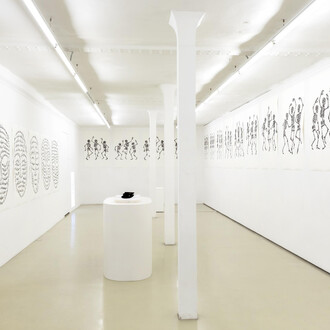The exhibitions series at the Technisches Museum Wien that features innovations, technology, and research – most recently with ‘Urban Future’ – is now launching its next exhibition phase entitled ‘Work & Production’ from mid-November 2018. The series is sponsored by the Federal Ministry for Transport, Innovation and Technology.
Work and Production – That’s something each and every one of us has to deal with every day, directly or indirectly. We all work, and not just for money. Consumption means that we also come into very direct contact with the outcome of production processes. The exhibition is now taking a step forward from the present into the future. It is also taking a step back, to the production sites. And it is stepping sideways, too, opening up a perspective onto new key issues.
Digitalisation and automation: What roles are now being taken over by computer-controlled processes from human workers? What is the significance of interfaces when it comes to co-operation? Who designs algorithms? What do digital twins do? And what does ‘zero fault’ actually mean?
Materials, cycles, and patterns of thought: Where will we find the materials of the future? What sort of access to the production process do consumers get when they place an order? Who networks processes and the flow of goods? And what happens over the ‘last mile’? The exhibition themes are presented in a historical context, with present-day researchers and experts addressing the key themes of the future.
Discover the exhibition at three different levels:
The ‘In Production’ section in a separate high-rise structure in the middle of the Museum invites visitors to embark on a journey through the production process. An order is placed for a particular product; its digital twin then experiences all the challenges that need to be met. What does the product ‘feel’ with its sensors as it makes its way along the smart/intelligent production line? What role do robots play as co-workers? Are they identifiable as such, fenced off, or do they also mingle with human workers? Who has what kind of needs? And anyway: who can shape the future of work?
The ‘At Work’ exhibition features the historical aspects of the future of work and production. How have professions evolved, and what is the situation today? Who are the key players, whether they are active, passive, and regulatory? What changes have occurred as a result of the industrial revolutions, and what links them with the present and our everyday lives? What technologies influence production? Who identifies the status of an installation, and what do sensors have to do with the human senses? Are 3D printouts always made of plastic? How are individual units marked and then monitored and accompanied throughout the production process? What do visions of the future tell us about the way our age thinks?
As an interactive third component, the techLAB is to run alongside the exhibitions. It invites visitors to get hands-on and experience the significance of key issues for themselves: What do we need to be able to do in order to excel in the work and production environment of the future? Certainly we will need to enjoy working with innovative technologies, to understand the digital world, and also possess creative problem-solving skills. Printing something out on a 3D printer, cutting with a laser, and programming: these are all things that visitors can learn to do in our Workshops or simply try them out for themselves – always under the watchful eye of our experts, on hand to stimulate our creativity and curiosity.
















